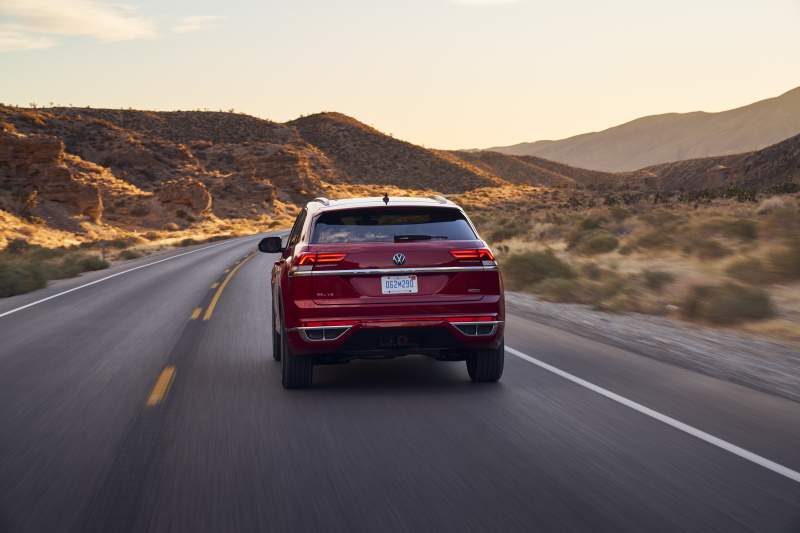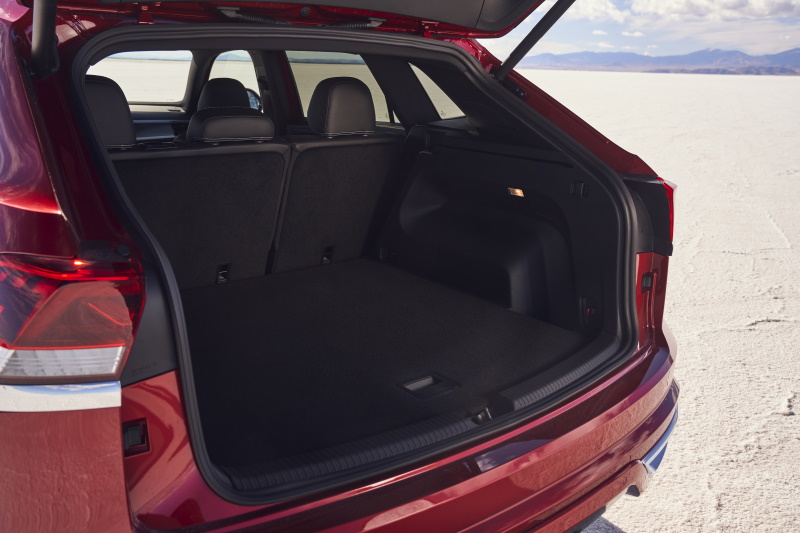There’s just something about these “SUV coupes” that rub me the wrong way. For one, I’m not the biggest fan of SUVs in general but I do like to be lower to the ground. The thing about SUV coupes is that they trade style for functionality and isn’t that why people drive SUVs? For a family, having five to seven seats along with a large trunk are a big priority. The difference between SUV coupes and regular SUVs isn’t severely different, but I prefer the look of a regular and curvy SUV. For most people, there’s a “love it or hate it” mantra for these kinds of vehicles
That brings me to Volkswagen. They make the Atlas SUV and I’ve driven it. It wasn’t a terrible SUV, but it lacked some features that I like due to its trim level. Unfortunately, Volkswagen went the way of BMW, Audi, Mercedes-Benz, and others. They turned the regular Atlas into an SUV coupe with a silly name. What does “Cross Sport” even mean? If it drove similar to the regular Atlas I drove, the answer is that it isn’t sporty. I don’t even think it’s crossing sporting and practical driving. Anyways, let’s get into this Cross Sport and see how different it is. We also have to: is it worth it?
The Atlas Cross Sport I had was the V6 SEL Premium R-Line. I’m usually a fan of VWs with the R-Line trim because it makes the vehicle look more aggressive and changes chrome trim pieces to black. From the front, it looks like an innocent Atlas. It's a typical VW and a bit conservative. Move to the side and you start to see the big changes to the rear. It definitely doesn’t look like the regular Atlas. This is where the “love it or hate it” comes into play. There’s a sharp cutoff between the body and rear glass and of course, is supposed to look more coupe and sporty. Now we are at the rear where you have the racked and small rear window and a huge expanse.
Oh my, am I a "love it" or "hate it" person for the Atlas Cross Sport? Sadly, dear reader, you’ll have to wait until later. For now, here’s the rest of the exterior. The Atlas Cross Sport “sported” Tourmaline Blue Metallic paint which does make the exterior pop out. There were giant 21” wheels and those looked great against the paint. Jumping into the interior, you’ll see almost every VW tech offers in all of its vehicles. The interior had Cinnamon Brown and Black leather seats and they were quite comfortable. I also love this interior combination.
Looking ahead, you have the traditional steering wheel with controls for the infotainment system, digital driver’s display, and safety features. The digital driver’s display was almost quite easy to use, being able to display your usual trip information and cruise control. My problem came under the digital tachometer. Somehow, I wasn’t able to make the “0 MPH” display change to something else, so I had two digital speeds along with the tachometer. Thankfully, everything else was easier to modify.
With climate controls turning digital within layers of the infotainment system, it’s nice that VW uses regular buttons and dials. The seats are heated and ventilated but when I tried the ventilation feature, I never felt it. Build quality is on the higher side, and it’s a good-looking cockpit. The rear seats are heated and are just fine. They’re fine because headroom is compromised due to the panoramic roof and raked rear end. Do you want seven seats or a larger trunk? Trade-in those looks for a different SUV.
Speaking of other SUVs, the Atlas Cross Sport is one of a few SUVs still using naturally-aspirated V6 engines. It’s a 3.6-liter V6 producing 276-horsepower and 266 lb-ft. With the AWD and eight-speed automatic, the Atlas Cross Sport gets to 60-mph in around 7.5 seconds. That may not seem slow, but how the Cross Sport delivers its power is not for sudden bursts of acceleration over 50 MPH. I had to accelerate to a 70 MPH onramp going to Chicago and the Atlas Cross Sport struggled after 50 MPH.
Around town it’s ok but the shifts are a little slow. As for how it drives, it’s decent. Other than some body-roll, there’s nothing that stands out. The adaptive cruise control worked as expected along with the other safety features like blind-spot monitoring, lane-keep assist, and collision warning. There are also a few driving modes for Eco, Normal, Sport, and various condition-based modes. Avoid Eco mode. It makes the car so slow you wonder if something is wrong. Sport helps the Cross Sport a little, but just keep it in Normal.
This Atlas Cross Sport was the top-of-the-line model, so it isn’t cheap. While the base Atlas Cross Sport starts at $31,000, this one goes for $51,000. Do you need to get this trim level? I wouldn’t for a few reasons. The $43,000 SEL model comes with a 2.0-liter turbocharged engine that’s way more economical than the 15-MPG V6. It still has safety features, heated seats, and a digital driver's display. If you want an Atlas Cross, you may want to jump up to the SEL. The V6 just rubs me the wrong way, especially with that dismal fuel economy.
Here is my dilemma. Asking “should you get it” is hard because of my bias towards these types of SUVs. I’ll say this: in terms of SUV Coupes, the Cross Sport isn’t terrible. I still think it looks silly but it’s a good entrance to the world of SUV Coupes. The SEL has some great features compared to this V6 SEL Premium R-Line. I don’t think I qualify for the “love it" or "hate it” looks because to me, it’s not as offensive as a BMW X6. Still, if you want a regular SUV, just look at the regular Atlas. Either way, it’s a good SUV with a subpar engine, nice interior, weak ventilated seats, and a good infotainment system.
Some Nerdalicious Stats










_websize.jpg)










